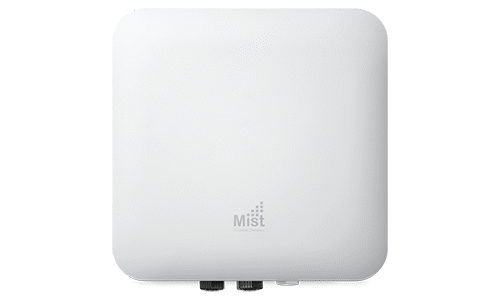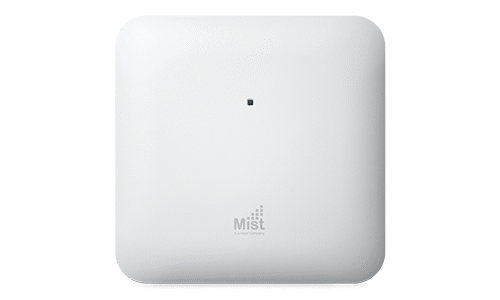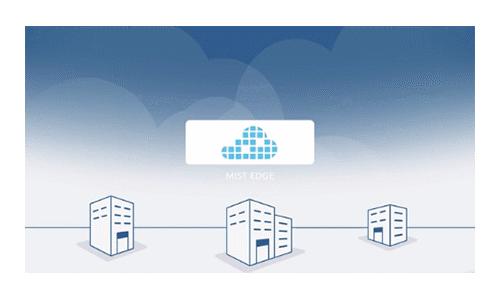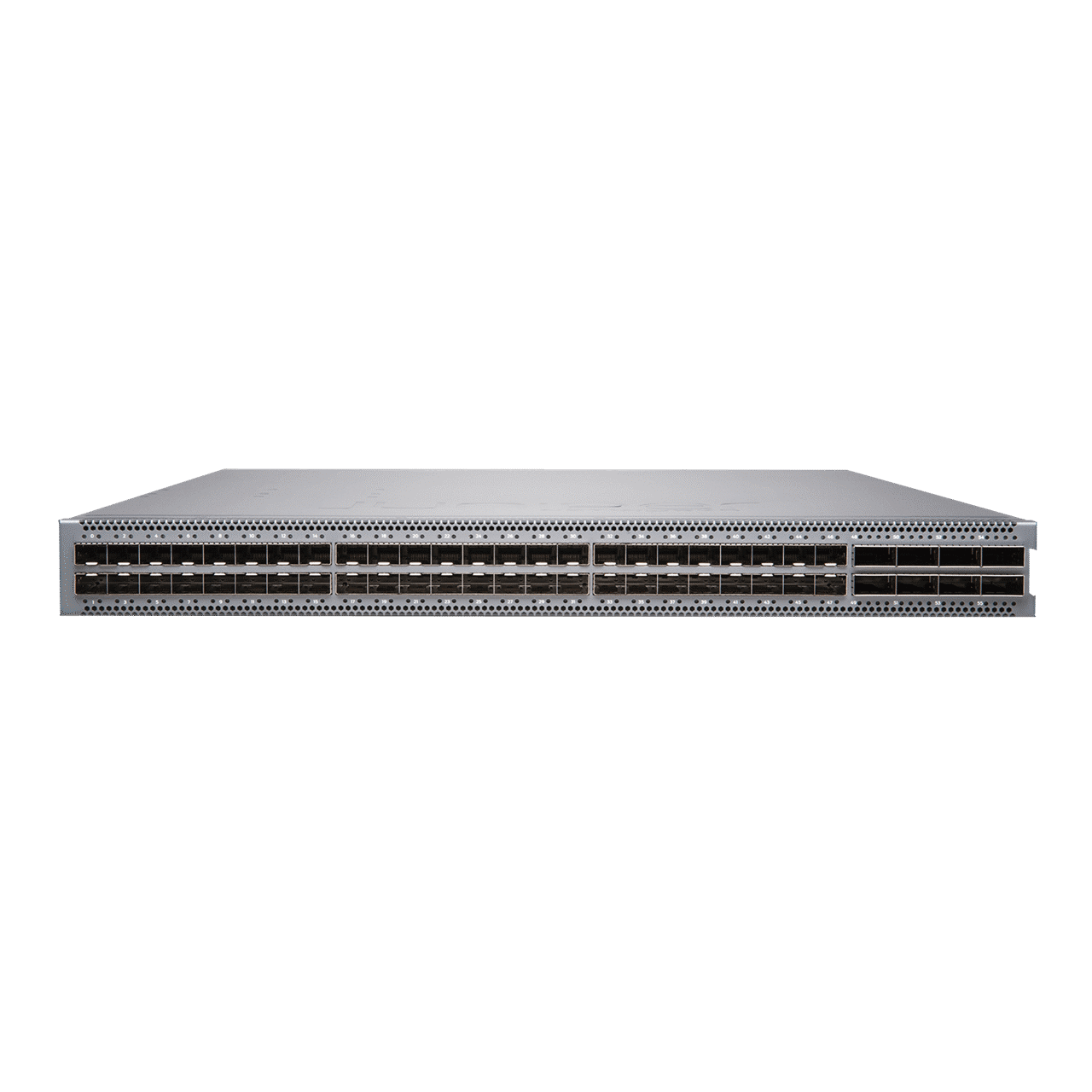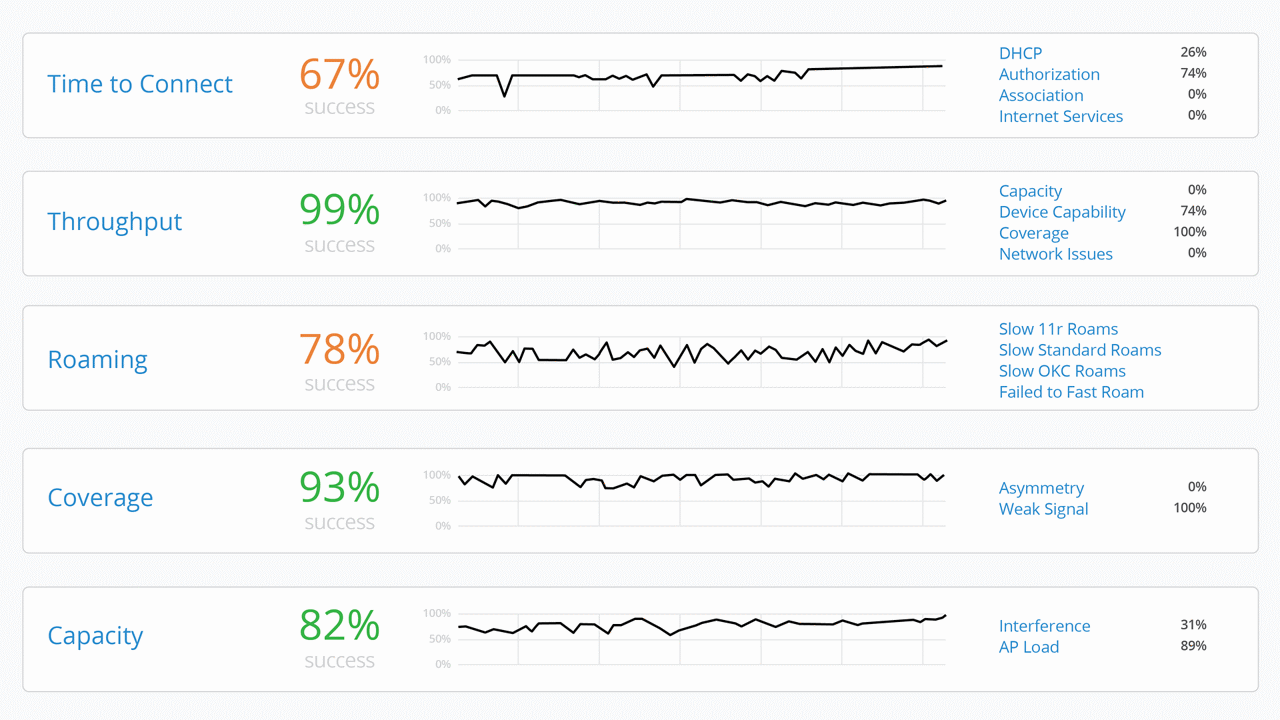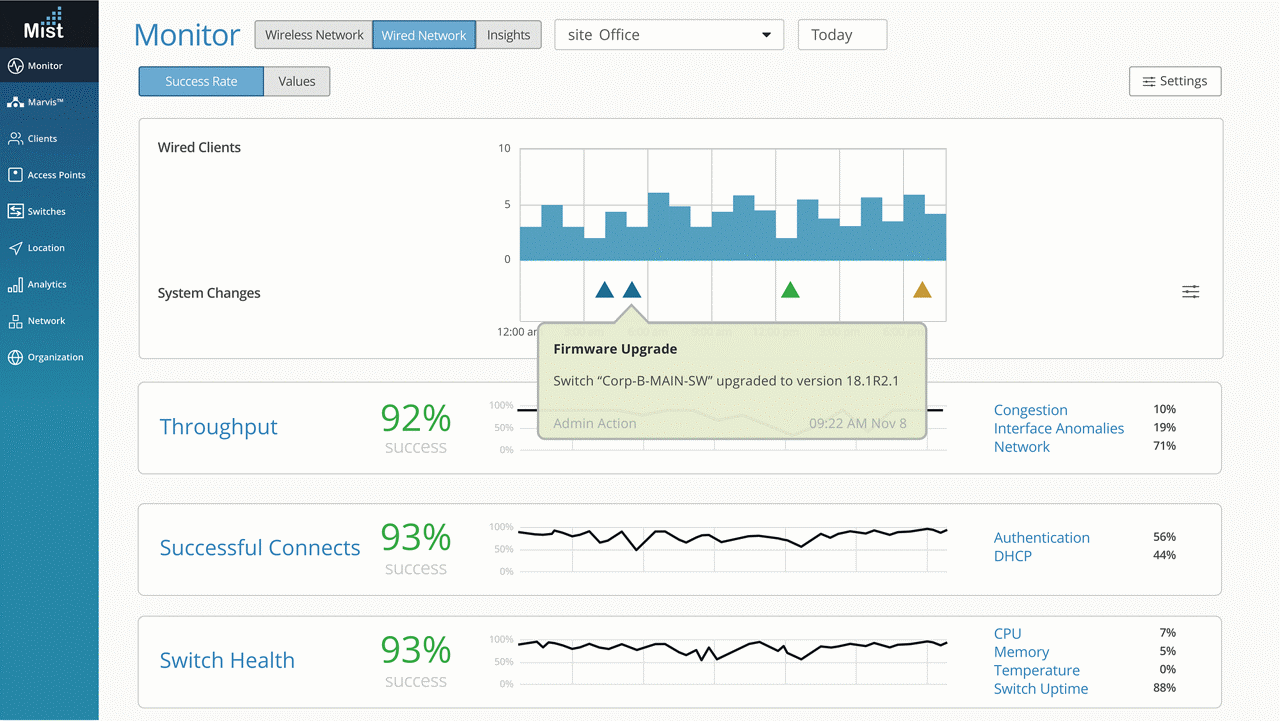Customer Success Story

The University of Tokyo reforms ICT to support world-class research and education
As a world-class research and higher education institution, the University of Tokyo aims to implement information and communications technology (ICT) that supports researchers and students. The university is creating an advanced network that facilitates the integrated management of the entire university communications infrastructure while still maintaining the operational independence of each department.
As part of its comprehensive ICT effort, the university implemented a Juniper wireless network, driven by Mist AI™. The university established a hierarchical operational environment that offers a unified view accessible to individuals from different employment categories, including full-time staff, employees with dual roles, and outsourced personnel. The university succeeded in creating a flexible network infrastructure that can be maintained by each department and support the needs of different campus locations.
Overview
| Company | The University of Tokyo |
| Industry | Education |
| Products used | AP63, AP32, Edge, EX4100, QFX5120, Wireless (Wi-Fi) Assurance, Wired Assurance |
| Region | APAC |

Reformed
ICT environment to support world-class education and research
Established
A wireless campus network to allow research and communication with anyone from anywhere
Preserved
Each department’s operational independence while maintaining a consistent wireless environment university-wide
Improved
User experiences through greater visibility into real-time network operations and automation that accelerates troubleshooting
Improve campus network experiences with unified Wi-Fi
The University of Tokyo, founded in 1877, is the oldest national university in Japan and one of the country's largest. Approximately 29,000 students are engaged in study and research in 10 academic departments and 15 graduate schools across three campuses located in Hongo and Komaba in Tokyo and Kashiwa in Chiba.
The Japanese government established the 10-trillion-yen “University Fund” to help create the world's top research universities. In response, the University of Tokyo announced its “UTokyo Compass” program, which outlined reforms the university should take, including wireless networking improvements, to assist in delivering premium university education.
“We are not simply adding new technology and new equipment, but are rethinking our ICT strategy from an operational perspective,” says Junji Tamatsukuri, Associate Professor (Information Systems) and Deputy Director of the Division for Information and Communication Systems. “We are reforming our IT infrastructure to promote diversity and dialogue and to support research and communication that can occur anywhere on campus.”
These goals led to the focus on a university-wide wireless network environment.
The University of Tokyo previously had wireless networks on each campus, but they were run on a departmental basis. As a result, when students from one department moved to another department's building, they were sometimes unable to connect to the Wi-Fi at the new location. Roaming services were provided in recent years to enable interconnection, but it was not a complete solution, and each department had different operational and security measures in place.
As part of UTokyo Compass, the university established the UTokyo Wi-Fi Task Force, a cross-organizational group charged with developing a university-wide wireless network.
Prof. Tamatsukuri and his team emphasized advancing operations while allowing each department to maintain its independence. There were around 100 people involved in operations throughout the university, and there could be multiple internal organizations with different operational systems even within the same department. It was necessary to operate the network with hierarchical management rights while maintaining the overall network structure, because the authorized tasks and skills of IT administrators varied depending on the department.
Performance stability was especially important, regardless of which device individuals were using, from where, and what the current traffic load was.
Another requirement was that the wireless access points could be operated efficiently and securely with low power consumption. In the event of a system failure, the network needed the smarts and automated capabilities to promptly identify and resolve the cause of the problem so that ICT resources could remain accessible as close to 100% of the time as possible.

AI-driven, cloud-based Wi-Fi architecture
The university ultimately selected the Juniper wireless and wired access solution. Juniper wireless access points and switches work in conjunction with the Juniper Mist cloud architecture, driven by Mist AI, to deliver optimized user experiences to students, faculty, and staff.
The Juniper solution, which has been used in large-scale network environments in Japan and elsewhere around the world, prioritizes user experience by providing administrators with visibility into not only aggregated network-wide metrics but also real-time client-side performance levels. At the same time, Juniper Wireless Access streamlines operations and shortens troubleshooting time with AI-driven automation and insights that stretch beyond the Wi-Fi network edge to also identify and fix upstream issues in the wired network, such as bad cables or misconfigured VLANs.
The solution is also highly regarded for its role-based management functions, which allow flexible configuration of administrator privileges, as well as its cloud-based controller for high fault tolerance.

Delivering network operational excellence
The University of Tokyo plans to install approximately 7,600 Juniper wireless access points to cover all its campuses by the end of 2023. As of April 2023, it had established a wireless network that covered half of each of its campuses and supported approximately 18,000 concurrently connected devices during peak hours.
“Juniper Mist is a cloud-based controller that can be managed and visualized on a departmental basis,” says Ryo Nakamura, PhD, Associate Professor of Information Science and Technology at UTokyo's Information Technology Center, Network Research Division. “The interface is easy to use for the staff in charge of each department. We felt that it allowed us to achieve our ideal system of 'management by everyone.’”
Prof. Nakamura adds, “The visualization function is also excellent, and we can change viewpoints freely by submitting queries. This allows for flexible operational management, such as viewing by time of year or event, or observing problems in each building.”
Prof. Nakamura also speaks highly of the Juniper Mist API, which is used to link with other applications for a variety of purposes such as graphing management data and submitting configurations. “We really appreciate the Juniper Mist API and would like to make more use of it. I believe that the more sample code and libraries are available for these purposes, the more it will become a DX, or digital experience, tool for network operations,” he/she says.
Prof. Tamatsukuri is looking at expanding the Juniper Mist cloud architecture to manage the entire network, and expects it to become the core of the University of Tokyo's ICT infrastructure in the future.
“The dedicated support of Juniper and its partners has allowed us to quickly develop a wireless environment and place for UTokyo Compass to become a reality,” says Prof. Tamatsukuri. “We also want to level out not only the wireless network but also the wired network as well.”


The University of Tokyo Selects Juniper Networks to Build a Unified Wireless Experience to Power the Future of Research and Education in Japan
Published September 2023

